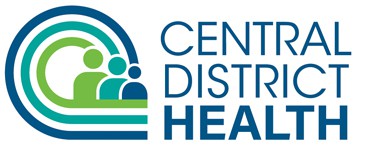Clinicians should be aware that in the current monkeypox outbreak in the U.S, clinical cases may not be recognized and tested because of uncharacteristic features compared to historical outbreaks and cases. No cases have been identified to date in Idaho. Please review the clinical presentations and recommendations for clinicians below.
Clinical presentations of confirmed cases to date
Descriptions of classic monkeypox disease describe a prodrome including fever, lymphadenopathy, headache, and muscle aches followed by development of a characteristic rash culminating in firm, deep seated, well-circumscribed and sometimes umbilicated lesions. The rash usually starts on the face or in the oral cavity and progresses through several synchronized stages on each affected area and concentrates on the face and extremities, including lesions on the palms and soles.
However, in the current outbreak, prodromal symptoms have not always occurred before the rash if they have occurred at all. In the U.S, all patients diagnosed with monkeypox have experienced a rash or enanthem. Although the characteristic rash has been observed, the rash has often begun in mucosal areas (i.e., genital, perianal, oral mucosa) and in some patients, the lesions have been scattered or localized to a specific body site and have not involved the face or extremities. [See images below.]
Some patients have presented with symptoms such as anorectal pain, tenesmus, and rectal bleeding which upon physical examination, have been found to be associated with visible perianal vesicular, pustular, or ulcerative skin lesions and proctitis. Unlike classic monkeypox disease, the lesions have sometimes been in different stages of progression on a specific anatomic site (e.g., vesicles and pustules existing side-by-side).
The clinical presentation of monkeypox may be similar to some STIs, such as syphilis, herpes, lymphogranuloma venereum (LGV), or other etiologies of proctitis. Clinicians should perform a thorough skin and mucosal (e.g., anal, vaginal, oral) examination for lesions consistent with monkeypox even if lesions consistent with those from more common infections (e.g., varicella zoster, syphilis, herpes) are observed.
Recommendations for Clinicians
- Evaluate patients with rashes initially considered characteristic of more common infections (e.g., varicella zoster or sexually transmitted infections) for a concurrent monkeypox rash, especially if the person has epidemiologic risk factors for monkeypox infection.
- Evaluate any individual presenting with perianal or genital ulcers, diffuse rash, or proctitis syndrome for STIs per the 2021 CDC STI Treatment Guidelines. Testing for STIs should be performed. The diagnosis of an STI does not exclude monkeypox, as a concurrent infection may be present. The clinical presentation of monkeypox may be similar to some STIs, such as syphilis, herpes, lymphogranuloma venereum (LGV), or other etiologies of proctitis.
- Perform a thorough skin and mucosal (e.g., anal, vaginal, oral) examination for the characteristic vesiculo-pustular rash of monkeypox for individuals being evaluated for possible STI or who have one or more epidemiologic risk factors for monkeypox; this allows for detection of lesions the patient may not have been previously aware of.
- Consider monkeypox testing for any patient who does not respond to STI treatment as expected.
- Use appropriate infection prevention measures when collecting specimens for monkeypox evaluation.
- Advise patients with prodromal symptoms (e.g., fever, malaise, headache) and one or more epidemiologic risk factors for monkeypox to self-isolate. If a rash does not appear within 5 days, the illness is unlikely to be monkeypox and alternative etiologies should be sought.
- Any patient with illness meeting the suspect case definition (new characteristic rash OR meet one of the epidemiologic criteria and has high clinical suspicion for monkeypox) and who does not require hospitalization should be counseled to isolate at home, abstain from contact with other individuals and pets, and wear appropriate personal protective equipment (e.g., clothing to cover lesions, face mask) to prevent further spread until test results have been received.
- Report suspected monkeypox infections to the Idaho Department of Health and Welfare (DHW), Epidemiology Section at 208-334-5939 or Central District Health at 208-327-8625. o The Idaho Bureau of Laboratories can be contacted at 208-334-2235 for guidance on clinical sample submission for orthopoxvirus testing. Specimens should be obtained from lesions (including those inside the mouth, anus, or vagina).
- All laboratory specimens should be sent through the Idaho Bureau of Laboratories unless authorized by DHW officials to send them directly to CDC. Please refer to the most recent CDC guidance for specimen collection to ensure proper collection of specimens.
- Request therapeutics when indicated through DHW based on a positive test result for non-Variola Orthopoxviruses (probable case).
For More Information
Contact the DHW Epidemiology Section at 208-334-5939 or Central District Health at 208-327-8625 if you have any questions or suspect a patient may have monkeypox.
Information for Healthcare Professionals

